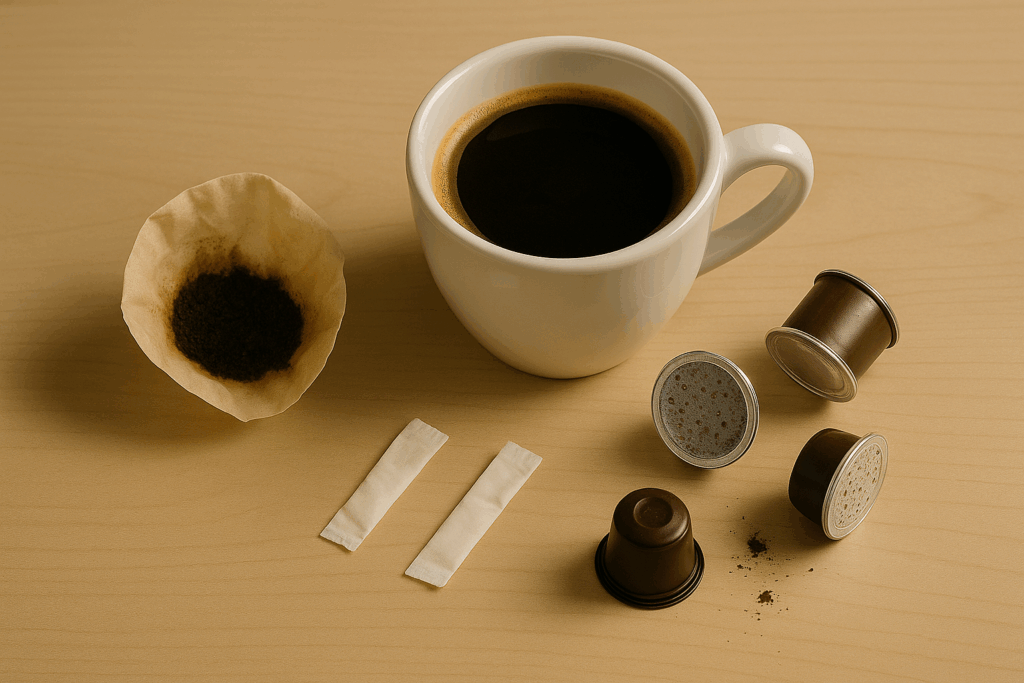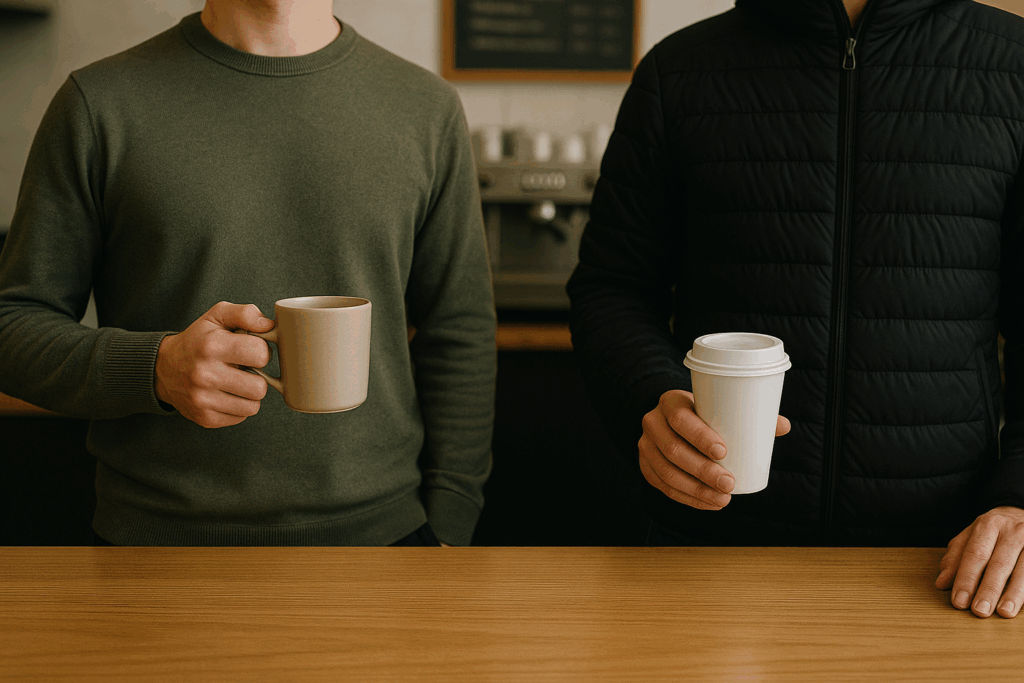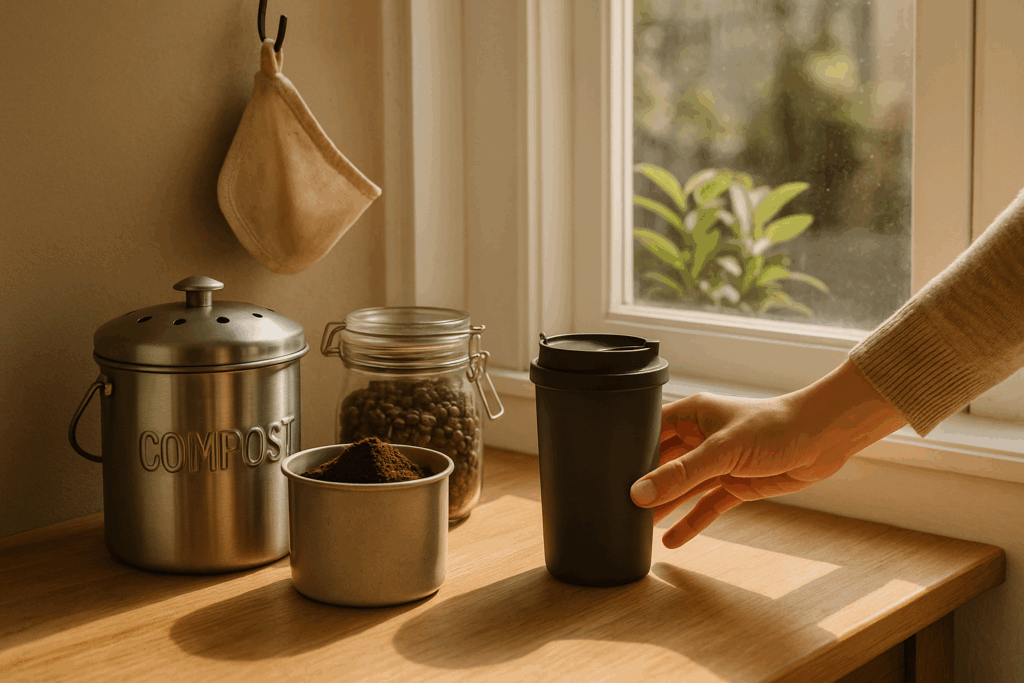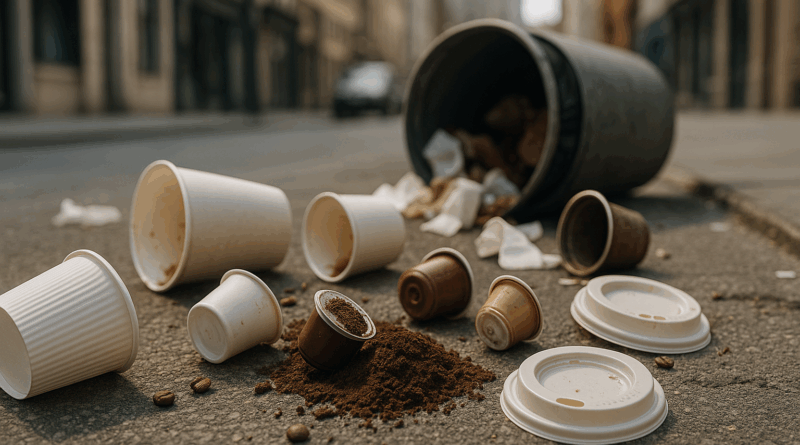Coffee and Waste: A Hidden Problem in Our Daily Ritual
Every day, more than 2.25 billion cups of coffee are consumed around the world (International Coffee Organization). It’s easy to focus on what’s in the cup — but we rarely think about what’s left behind.
From used coffee grounds and plastic pods to paper cups and packaging, our daily coffee habits quietly generate a large amount of waste. And because much of it is tied to convenience, we don’t always notice the environmental cost.
But understanding where coffee waste comes from — and where it ends up — is a key step toward making coffee more sustainable for everyone.
What Exactly Counts as Coffee Waste?
When we think about coffee waste, used grounds might be the first thing that comes to mind. But the reality is more complex — and far broader. Coffee waste takes many forms, and most of them are part of everyday habits we rarely question.
Used Coffee Grounds
The most obvious waste product. After brewing, coffee grounds are often tossed into the trash. In landfills, these organic materials can generate methane — a greenhouse gas far more potent than carbon dioxide. Yet grounds are also rich in nutrients, meaning they have real potential for reuse or composting.
Single-Use Cups and Lids
The global addiction to takeaway coffee has led to an explosion of single-use paper and plastic cups. While many are marketed as recyclable, very few actually get recycled due to plastic linings or food residue. In the UK alone, over 2.5 billion coffee cups are discarded every year — and less than 1% are effectively recycled (BBC).

Coffee Pods and Capsules
Convenient? Absolutely. Sustainable? Not always. Aluminum and plastic capsules used in machines like Nespresso or Keurig are often hard to recycle unless properly separated and collected. Even when brands offer recycling programs, participation rates remain low.
Overbrewed or Wasted Coffee
It might not feel like much, but that last half pot of coffee poured down the drain adds up. Whether it’s overestimated amounts at home or unsold brews in cafés, liquid coffee waste contributes to unnecessary water and energy loss.
Packaging Waste
Ground coffee and beans usually come wrapped in multilayered bags that mix plastic, foil, and paper — materials that are difficult or impossible to recycle. Single-serve instant sachets, sweetened instant drinks, and even sugar packets all contribute to the footprint.
In short, coffee waste isn’t just one thing. It’s a combination of materials, behaviors, and choices — most of them rooted in convenience. But once we see the full picture, it becomes much easier to make more conscious decisions with each cup.
Environmental and Social Costs
Coffee waste might seem small when you look at a single cup. But zoom out, and the numbers tell a different story — one where daily habits scale into global consequences.
Why Coffee Grounds in Landfills Matter
When coffee grounds end up in landfills, they don’t break down cleanly. Instead, they decompose without oxygen, releasing methane — a greenhouse gas that is over 25 times more potent than carbon dioxide over a 100-year period, according to the U.S. Environmental Protection Agency (EPA). With millions of tons of coffee grounds discarded each year, this adds up quickly.
The Disposable Cup Crisis
Globally, it’s estimated that 500 billion disposable cups are used every year — many of them for coffee (Clean Water Action). Most of these cups are lined with plastic, making them difficult to recycle. Even in countries with strong recycling systems, fewer than 1 in 400 cups gets properly recycled (UK Parliament Report). The rest end up in landfills, incinerators, or the natural environment, contributing to plastic pollution and resource waste.
Energy and Resource Waste
Brewing coffee takes energy and water. Throwing away unused coffee — or overbuying beans that go stale — means wasting the resources that went into growing, processing, packaging, and shipping it. For example, it takes about 130 liters of water to produce a single cup of coffee when you account for the full agricultural process, according to the Water Footprint Network.
Hidden Ethical Implications
Wasting coffee doesn’t just harm the environment — it undermines the hard work of the people behind every bean. Smallholder farmers, who make up the majority of the global coffee workforce, often face unstable incomes and climate pressures. When coffee is wasted, it sends a ripple effect through the supply chain, from crop to café.
So why does it matter? Because the environmental footprint of coffee doesn’t end when the cup is empty. What we throw away — and how we do it — directly shapes the sustainability of the entire system.
Simple Changes with Real Impact
You don’t need to overhaul your entire routine to reduce coffee waste. In fact, some of the most effective changes are surprisingly small — and they start right at home, one cup at a time.
Reuse or Compost Coffee Grounds
Instead of tossing used grounds in the trash, consider giving them a second life. Coffee grounds are rich in nitrogen and make an excellent addition to compost piles. No compost bin? They can still be used to fertilize plants, neutralize odors in your fridge, or even as a natural exfoliant for your skin.
Switch to a Reusable Cup
It’s one of the easiest sustainable swaps: bring your own cup. In most places, you can simply ask to have your coffee made in a personal mug — a simple step that helps cut down on single-use waste.

Choose Recyclable or Compostable Pods
If you use a single-serve machine, look for coffee capsules made from recyclable aluminum or compostable materials. Brands like Nespresso have developed take-back programs, and others are creating biodegradable pods that break down naturally.
Brew What You’ll Actually Drink
Overbrewing is a common habit, especially at home or in the office. Try making just the amount you need — and store any leftovers in the fridge for an iced coffee later. It’s a simple way to reduce waste and enjoy your brew twice.
Buy Smarter, Store Better
Buy coffee in smaller amounts that match your actual consumption. When stored properly — in an airtight, opaque container away from heat and moisture — beans stay fresher longer. This helps reduce spoilage and the temptation to toss stale coffee.
Support Low-Waste Roasters
More roasters are moving toward minimal packaging, bulk options, or returnable containers. If you have a local coffee shop or roaster offering these, supporting them helps reduce waste across the entire supply chain.
These shifts don’t require you to give up coffee or compromise on quality. They simply ask you to approach your brew a little more mindfully — and in return, they offer the satisfaction of making a difference with every cup.
A Shared Responsibility: From Bean to Bin
Coffee waste is a real problem — but it’s also one we can influence. From single-use cups to forgotten grounds, our daily habits contribute more than we think. The good news? We don’t have to overhaul our lives to make a meaningful difference.
Whether it’s brewing only what you’ll actually drink, storing beans properly to avoid spoilage, or choosing a reusable cup when you’re on the go, these everyday decisions matter. Reusing, reducing, and rethinking how we consume coffee helps lower our individual footprint without sacrificing quality or enjoyment.
Every conscious choice adds up. And when millions of people make those small, intentional changes, the result is powerful. That’s how personal responsibility leads to collective impact — starting with your next cup.


